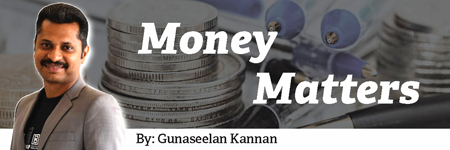
“Debt is a tool, not a trap”
BORROWING or lending is the oldest methods, which can be found during the Roman empire 3,000 years ago, when pawnbrokers lent money by collecting collateral from a borrower and reducing the risk of the lender.
This is something we still use today when it comes to securing loans. However, with the collapse of the Roman empire, bank was invented to provide lending services, somewhere in the 16th century in Europe.
Today, household debt or consumer credit function as the heart and lifeblood of any functioning economy.
There are different types of loans provided by the banks and other financial institutions, but some common types of lending are home mortgages, hire purchases, personal loans and credit cards.
Modern lending system has been arising with the emergence of technology involvement in banks. The government formed Bank Negara to monitor regulate the banking system. Banks started providing loans to consumers based on their needs, purposes and paying back capacity. Since debt has become a significant tool in our daily lives, let’s discuss the benefits and drawbacks of debt.
Get something you can’t afford now
Household debt allows people to purchase goods and services immediately and repay the costs over time.
For example, a home loan taken out from a bank or financial institution helps you purchase property today. This allows more individuals to purchase a home as they don’t need to take out the total amount upfront. Therefore, we don’t need to save that money for years and consume later part in our life.
As an emergency fund
Very often, life throws us with unexpected expenses and the next thing we know, we’re left with a broken fridge, an expensive summon or in some more extreme cases, a costly home repair or health (surgery) that needs our immediate action. With emergency expenses, we can’t wait several days for a loan to be disbursed, hence credit card and personal loan can be used as an emergency fund.
Leverage for wealth building
Building wealth requires working smarter rather than harder. Using debt is one of the ways to build wealth.
Leverage allows us to build more wealth than we could ever achieve alone by utilising resources that extend beyond our capacity. Leverage uses borrowed capital or debt to increase the potential return of an investment. Real estate investment is the most common way used to leverage. Leverage works to advantage when real estate values rise, but it can also lead to losses if values decline.
Reduces future buying power
Future income is tied up in household debt. If we use household debt today, part of our future income will go toward the past purchases or consumption. Opportunity cost is the value of whatever we are giving up today when we purchase an item with a debt.
It involves the use of future income and whatever else could have been bought with the interest payment.
Encourages overspending
Debt can lead to an overspending habit, especially with credit card and personal loan. By simply having credit available, we are likely to spend more than when paying cash for everything. Debt allows us to spend the money we don’t have. Temptation to sales, shopping and even buying a bigger home or car can lead to financial difficulties. We can resolve this bad habit by reducing our expenses and relying on our income to pay for our wants and needs.
Higher cost of borrowing
If we purchase something and don’t pay it off immediately, we will end up paying not only the purchase price but also the interest charge on that item.
In other words, if you carry a balance, all your purchases will end up costing you a little more.
Some accounts have annual fees. There may also be fees for cash advances, along with high interest rates.
In addition, you may spend more on interest and fees than you earn in discounts or cash back. Make sure the benefits outweigh the costs. Realistically, nearly everyone needs to borrow money at some point to achieve their financial goals.
Mortgage, hire purchase, credit card and other loans are a great way to bridge the gap between income or finance large purchases that we can pay off over time. However, when used irresponsibly, personal debts can quickly erode our credit and financial health. Therefore, it’s important to consider all the advantages and disadvantages before incorporating personal debts into our financial plan.
Gunaseelan Kannan, CFP, a Financial Adviser Representative by Bank Negara Malaysia and a Licensed Financial Planner by Securities Commission (CMSRL/B4198/2013), is currently pursuing his Doctorate research on entrepreneurship, financial planning and financial technology. He also lectures on accounting, finance and business fields in Asia Pacific University of Technology and Innovation (APU). He is the Winner of Malaysian Financial Planner of the Year 2020, from Financial Planning Association of Malaysia. He can be reached at [email protected]
